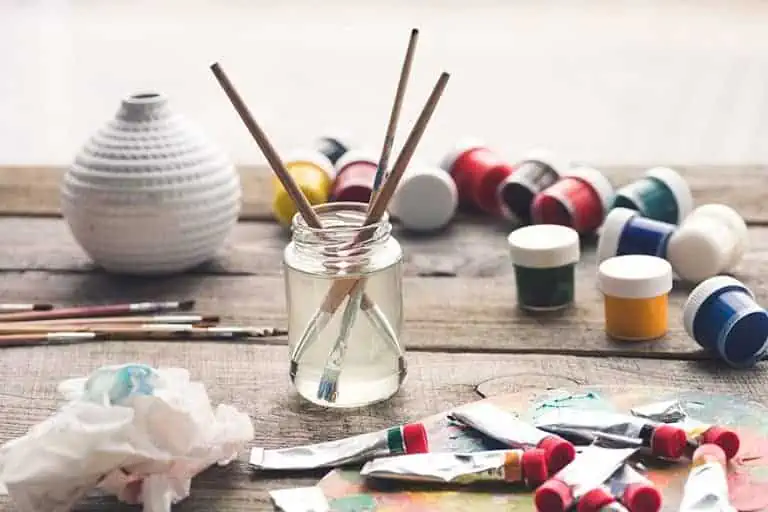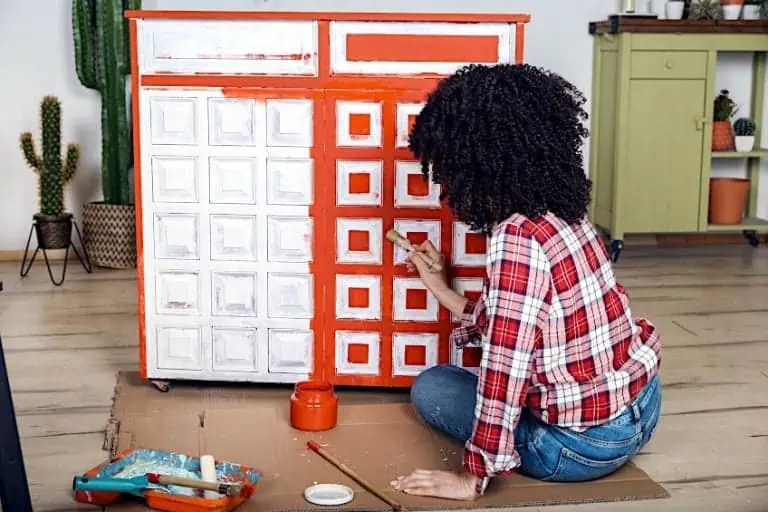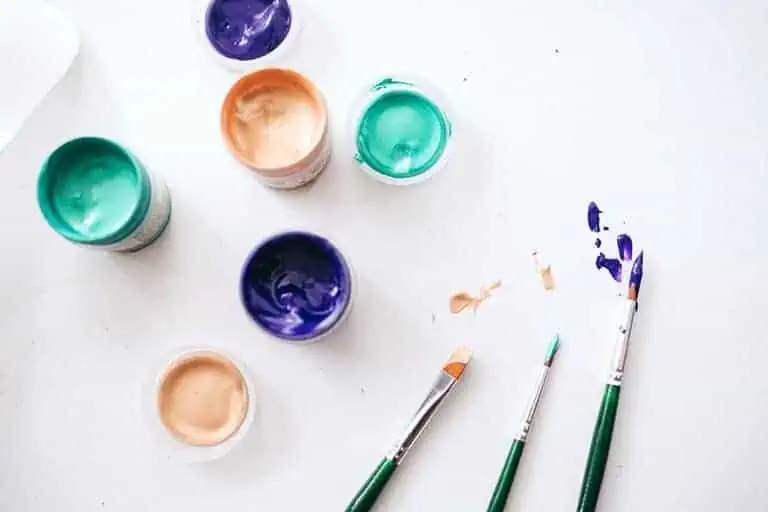What Is Acrylic Paint? Complete Introduction for Acrylic Paints
This post may contain affiliate links. We may earn a small commission from purchases made through them, at no additional cost to you.
Do you want to start painting with acrylics and want to learn about all the acrylic paint uses? Acrylic paints have only been available commercially since the 1950s, however, it has become quite popular amongst all artists and hobbyists. The reason being that acrylics are easy to use and are extremely versatile when compared to other paints like oils and watercolors. To see if acrylic paints are for you, read further to find out more about this amazing way to create unique artwork.
Table of Contents
- 1 What Is Acrylic Paint?
- 2 Why Are Acrylic Paints So Popular?
- 3 Acrylic Paint Pros and Cons
- 4 Types of Acrylic Paints
- 5 Different Acrylic Paint Grades
- 6 Features to Consider When Purchasing Acrylic Paints
- 7 A Basic Guide on How to Work With Acrylics
- 8 How to Make Acrylic Paint
- 9 Acrylic Painting Tips
- 10 Frequently Asked Questions
What Is Acrylic Paint?
Acrylic paints are easy to work with and provide vibrant colors that you can manipulate to form different textures and consistencies. Acrylic paints are water-based and consist of pigments that are distributed in an acrylic polymer suspension. So, you have three main components that make up acrylic paints, pigment, acrylic binder, and water.
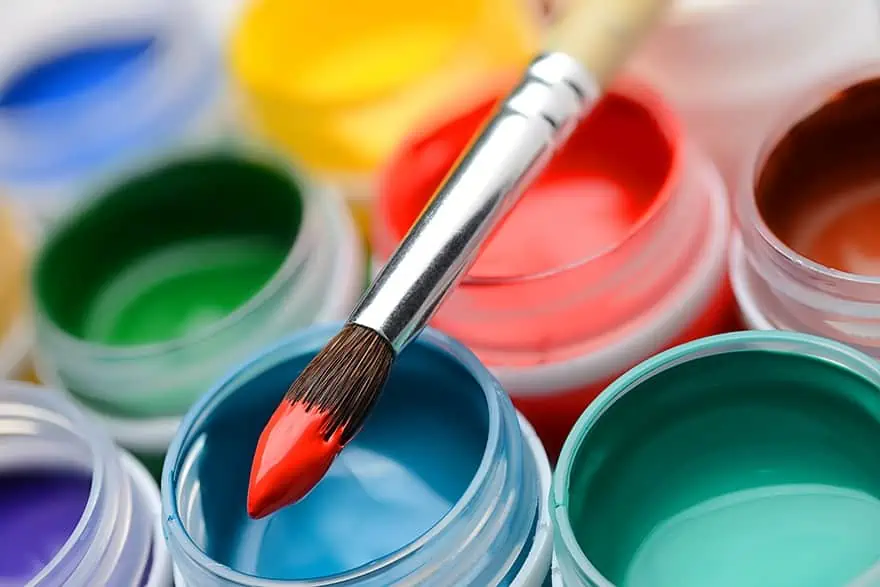
Acrylic Pigments
Pigments are what adds color to the paint and are usually from natural sources, however, you also get synthetic pigments. These tiny particles of pigments are suspended in the paint and have no similarities with the surface they are applied to. So, you need other ingredients to apply the color pigments to a surface.
Acrylic Binder
Since pigments will not stick to a surface by themselves, you need something that makes sure the paint stays on the surface. This is where the acrylic binder comes into play, and once the water has evaporated, the acrylic polymer and binder forms a coat that attaches to the paper or surface.
Water
As mentioned, acrylic paints are water-based and the water acts as the vehicle in which all other acrylic paint ingredients are carried. This forms what is also known as a polymer emulsion or suspension. Once the paint is applied to a surface, the water evaporates or is absorbed and leaves behind a polymer film with the color pigments.
Other Acrylic Paint Ingredients
The above are the basic acrylic paint ingredients and there is a lot more involved in the making of acrylic paints. The pigment will naturally float on top of the water, so an acrylic dispersant is included to provide a more consistent mixture. Other additives can also be added for further effectiveness.
- Buffers that help to keep a proper pH level and helps stabilize the paint and plays a part in the durability
- Initiators that start the process of polymerization, forming of the polymer film during the drying process
- Surfactants and defoamers that aid in the drying process
- Preservatives that help to prevent any microorganisms from growing
- Thickeners and stabilizers
Once you purchase the acrylic paint, you can then also add in certain mediums. These mediums enhance and provide other properties. For example, making the paint thicker or thinner. You can alter the body of the paint by adding fluid mediums or flow enhancers and these come in gels and pastes you can add to the paint.

To thin acrylic paint, you can simply add a little water. However, adding too much might cause the dry paint to become weak. If you want to thin acrylic paint, it would be best to add a fluid enhancer or medium. This will not upset the outcome and the paint will remain stable when dry. You can add various other mediums to increase body, paste mediums are usually opaque, while the gel mediums are clear. A gel medium can help to increase the body of acrylic paint and extend it, without thinning the paint. You can also modify the time it takes for acrylic paints to dry. Acrylic paints tend to dry quite fast, so you can try adding a retarder, which should help to increase your working time.
Note: Even though acrylic paints have only come into the art scene recently, there are two distinctive types of acrylic paints, namely your traditional and modern. The traditional paints dry quickly, and the modern acrylic paints dry slightly slower and can be reactivated once the paint has dried.
Why Are Acrylic Paints So Popular?
In the past, paints were hand mixed to get all the desired results and, in the case of oil paints, many of the ingredients were toxic. Most acrylic paints are non-toxic and come ready to use, but you can modify them if you wish. Acrylic paints are also versatile, they can be used on a lot of different surfaces like:
- Canvas
- Paper
- Wood
- Metal
- Plastic
- Fabric
- Glass
- Brick
- Cement
What is acrylic paint used for? You can use acrylic paint for painting, but it can also be used in a variety of other arts and crafts projects. Acrylic paints can be thinned or thickened, and various textures can be created, which makes them quite flexible in applications. There are no toxic fumes and the paint cleans up easily with water. Acrylic paint uses can include mixed-media art, creating collages, and various arts and crafts projects. In most cases, whenever applying acrylic paint, a primer is recommended.
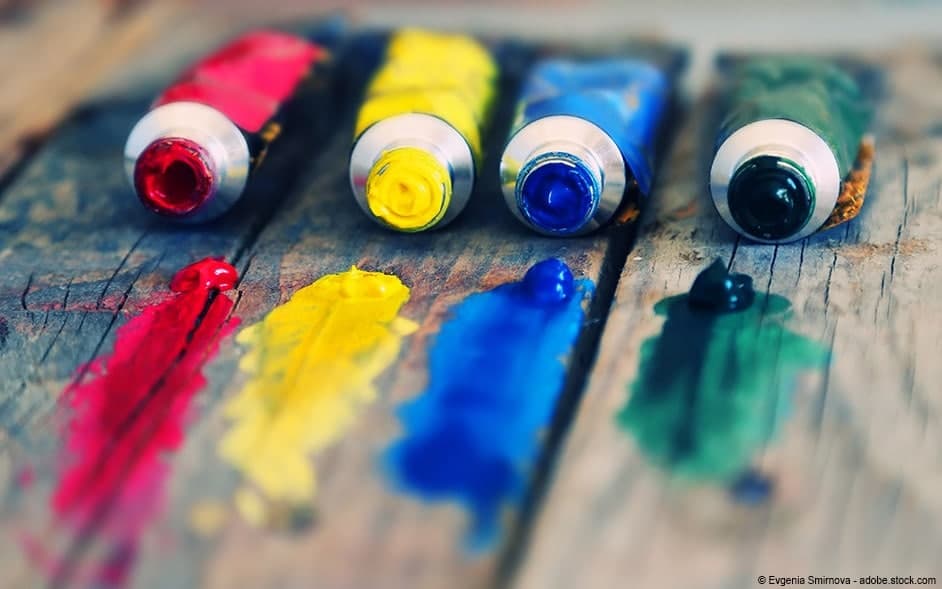
Acrylic Paint Pros and Cons
All products including watercolors, oil paints, and acrylics all have their advantages and disadvantages. You might enjoy working with watercolors instead of oils and may be wondering what all the hype is about acrylic paints. So, to help you with making your decision, below are some of the best-known pros and cons of acrylic paints.
PROS
- The main feature that sets acrylics apart is the fact you can paint on a variety of surfaces from paper and canvas to wood, plastic, and more
- You only need a few tools: brushes, paint, water, and a surface to paint on
- Acrylics are lightfast and you will not have your work turning yellow over time
- Looking for versatility, then acrylics are a good choice. You can use it thick to achieve impasto effects, or water it down for a more transparent watercolor effect. You have control over the consistency
- Acrylic paints have a low odor and are generally non-toxic
- Brushes and paint can be cleaned using only water as long as it is done straight away while the paint is still wet
- Layering is quicker and easier as the paint dries fast. However, modern acrylics have longer drying times
- Flexible, durable, and becomes water-resistant once dry
- Offers many vibrant colors and products that are more affordable than other paint options
CONS
- Acrylic paints dry quickly, so you will need to plan and work faster, or you can use acrylic mediums to slow down the drying time
- Due to the quick drying time, blending can be challenging
- When applying the acrylic paint, the paint turns darker as it dries
- Some acrylics may contain toxic pigments and added toxins when using acrylic mediums
- Once the paint dries, you cannot re-wet or alter it. Some modern acrylics can be reactivated for a wet-on-wet technique
- Once dry, it is hard to remove from brushes or clothes
Types of Acrylic Paints
Depending on what you would like to achieve with your art or craft, there are different types of acrylic paints to help. The viscosity of the paint is also known as the “body” of the paint and comes in various formulas, and your choice is governed by what surface you are using and the technique you wish to achieve.
Soft-Bodied Acrylic Paints
The soft body acrylic paints have a smooth consistency and can easily be used with various paint mediums. Adding mediums will not affect the paint viscosity and should still apply smoothly to the surface. These paints are self-leveling and are slightly less thick than the heavy body variety paints. Perfect for smooth and continuous brush movements.

Heavy-Bodied Acrylic Paints
These are thick paints and have a texture similar to soft butter. These paints are great to use on rougher surfaces. The heavy body of the paint allows it to make peaks and maintain brush strokes, which is helpful if applying an impasto technique. These paints are popular with those who like the heavy body similar to oil paints but are looking for a quicker drying time.

Fluid Acrylic Paints
The texture of this type of paint is like double cream and usually comes in a bottle. The paints offer vibrant colors that come in a thinner consistency. These types of acrylic paints are perfect for staining, spraying, and brushing and can be used for glazes as well as staining effects.
Acrylic Inks
These are extremely fluid in consistency and contain fine pigments that provide intense colors. The ink dries to a gloss finish and can be used with an airbrush, a paintbrush, or a pen. These paints are just the right consistency to fill markers. The ink is similar to an airbrush acrylic; however, the special airbrush paint is less likely to cause clogging or impede the flow of paint.
Acrylic Gouache
This type of acrylic paint offers a beautifully smooth and creamy texture that dries to an opaque and matte finish. Since it is an acrylic gouache, the paints can not be reactivated once dry, however, there are products available that can do this. Regular gouache is easily reactivated with a little water once it has dried and should not be confused with acrylic gouache.
Interactive Acrylic Paints
These are artist-quality paints that dry quickly. However, this type of acrylic paint is unique as it contains an “unlocking formula”. This is a liquid that will activate dry acrylic paint and also slows down the drying time if the paint is still wet. Once you are done painting, a fast-medium fixer is used to fix or seal the paint.
Open Acrylic Paints
These paints are made to dry slower so you can apply techniques like wet-on-wet. Also, the paint is great to use for blending when painting on canvas or paper. Open acrylics are best used by those who like to apply oil painting techniques.
Acrylic Markers and Sprays
Today, you can get acrylic marker pens that offer an easy way to use acrylics. The markers provide vibrant colors and can be used for painting and drawing. The markers come in various shapes and are made to dry rapidly and are also waterproof. They can also be used on many surfaces including metal, plastic, paper, and more. You also get acrylic spray paints, which can apply thin layers to most surfaces. When spraying it is recommended you do so in an area that is well ventilated and wear a mask while working as some products contain solvents.

Using a spray gun system that can help you to make finer, more detailed applications, and can be used for broader coverage. Otherwise, you can use a paint spray can, which also does the job effectively.
Different Acrylic Paint Grades
You can easily combine the various types of acrylics, for example, mix a soft body paint with hard body paint. This provides a lot of control over how you want to use acrylic paints, and the techniques and applications are vast. So, with the different types of paint, you also get different grades.
Professional Acrylic Paints
This type of acrylic paint consists of the highest quality and uses the best pigments, and other ingredients, and contains less acrylic binder. The paint produced comes in vibrant colors and you have numerous color selections. Professional paints are usually more expensive, but the prices can vary from brand to brand. Also, depending on the pigments and ingredients used, the drying times, opacity, texture, and other paint qualities can vary.
Artist Acrylic Paints
The artist-grade paints, in most cases, have similar pigments to professional-grade acrylics. However, these are made more affordable by adding more binder and other ingredients which help to improve quality. Both the professional and artist-grade have a lower color shift, meaning the paint changes from lighter to darker less than your cheaper variety of paints.
Student Acrylic Paints
These paints contain more binder than pigments and also contain fillers and mediums to produce more bulk. Due to these added ingredients, the opacity and saturation can be affected. For example, some might find the paints they are using to be chalky due to the fillers that have been added. However, these paints are best for those looking for a more affordable and budget-friendly option. Great for beginners, and other artists as you can still produce some amazing work with these paints.
Features to Consider When Purchasing Acrylic Paints
Choosing the type or brand of a product depends a lot on your painting style, what techniques you want to use and the surface you want to paint on. There are some general factors you can consider, and these include a few of the following.
| Acrylic Paint Feature | Description |
| Quality | Are you looking for professional-grade paint, or are you happy with a more affordable student-grade acrylic paint? |
| Paint Colors | You can start with some basic colors or choose an acrylic paint set
|
| Lightfastness | Each product has a lightfastness standard that you need to look up if you want more durable colors |
| Viscosity | Consider what type of paint you want, heavy body, light-body, or fluid, amongst others
|
| Type of Paint Container | Do you prefer using the paints from a jar, a tube, or maybe even spraying the paint
|
| Drying Times | Acrylics dry fast, if you want a longer dry time, consider the interactive or open acrylics, or using a retarding medium |
| Brands | Choosing between brands depends on quality and price. Stick to the more affordable brands, to begin with, and slowly start experimenting with other brands |
A Basic Guide on How to Work With Acrylics
Now that you have decided on a brand, you have either chosen a set of paints with all the colors you need or prefer individual colors. If you have gone for individual paints, there are some colors you should include. The following list contains ten of the best basic colors you can mix and blend to create other tones and color shades.
| Color Name | Shade of Color | Hex Number |
| Ivory Black | #231F20 | |
| Cadmium Red | #D22B2B | |
| Cadmium Orange | #ED872D | |
| Alizarin Crimson | #E32636 | |
| Cadmium Yellow | #FFF23E | |
| Phthalo Green | #123524 | |
| Phthalo Blue | #000F89 | |
| Burnt Sienna | #E97451 | |
| Dioxazine Purple | #5C3A93 | |
| Titanium White | #F3F4F7 |
Materials Needed for Acrylic Painting
Now that you have your paints, you are not quite ready to start painting. You will have to collect a few more materials and tools before you get started. There are a few acrylic painting supplies that you will need like the paints, but there are also a few additional tools you can add on.
Essential Painting Supplies:
- Acrylic Paints
- Acrylic Paintbrushes (different sizes and shapes)
- Painting Surface (paper, canvas, other)
- Palette
- Paper Towels or a clean rag
- At least two cups of clean water
- Some soap cleaning
Additional Painting Supplies:
- Varnish
- Gesso
- Easel
- Apron
- Palette knife and other tools like sponges or toothpicks
- Masking Tape
- Graphite Pencil
- Acrylic Mediums
Drawing and Applying Gesso
We are going to assume you are painting on canvas with acrylic paints for this guide. Most canvases you can purchase today already have a layer of gesso applied. However, you can apply your own as well. Gesso is there to help the paint adhere better to the canvas surface, exactly like a primer does. However, it is not absolutely necessary as in the case when using oil paints. When it comes to choosing an object or subject to paint, start with something simple like a vase, fruit, or other still life object. When beginning to paint, experimentation and discovering how the paint reacts is important. Nobody produces a masterpiece on their first try.
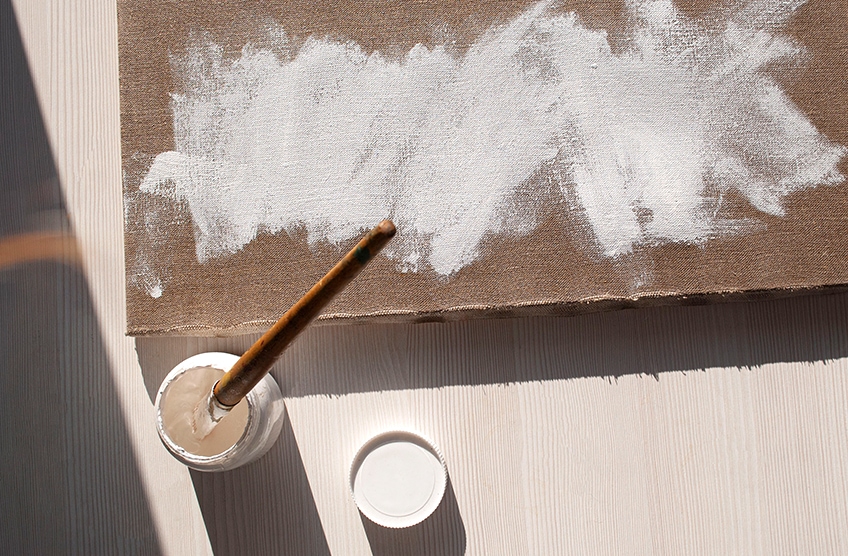
If you are applying the gesso, you can first use your graphite pencil to lay out your design or image. You can then apply a thin layer of gesso over the pencil lines so that it will not smudge when painting. You can also use gesso or a primer when using acrylics on wood, plastic, or other surfaces.
Applying an Underpainting
The underpainting acts as a base for further layers of paint and helps to outline lighter and darker areas. This can easily be done with acrylics as the paint dries quickly, so you do not have to wait too long before applying more layers. You can add semi-transparent washes over the underpainting in this manner. The entire canvas is covered with monochrome paint, creating contrast and various tonal values; earth tones are usually popular. You do not want to use a color that is too dark, as you do not want to cover up the drawing. You must wait and allow the paint to dry and then you can add more layers of paint.
Painting in Colors
Once you have established your underpainting, your next step is to add in more color. Once the shadows and tonal values have been established, you can then determine similar hues, tones, or shades to paint in the selected areas. You can cover the entire surface before moving on to the details, however, some work on and complete certain areas first before moving on. With practice, you should find your rhythm and method as you paint. Apply the paint in thin layers and paint from light to dark colors.
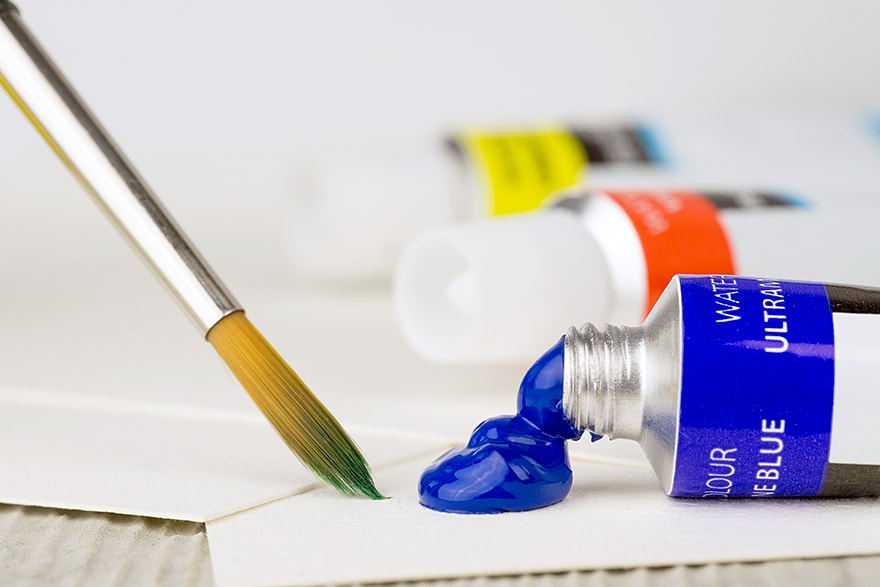
Note: When working with different brands of paint, the paints should be similar in quality and contain the same binder. When using paints with different formulas, could affect the outcome and could cause various unwanted irregularities.
Painting in the Details
Paint in the larger shapes and move onto the smaller details, then add in more color, and finally add in the highlights. Painting is a learning experience so if things do not go as expected, try again. Take some classes and eventually, you will be painting with ease. After all, it is about enjoying yourself, so persevere and have fun with figuring out the process.
When you do create a piece that you are proud of, you can consider preserving it by applying an appropriate varnish. Not only will this add protection, but it also provides a nice glossy look and feel to the painting.
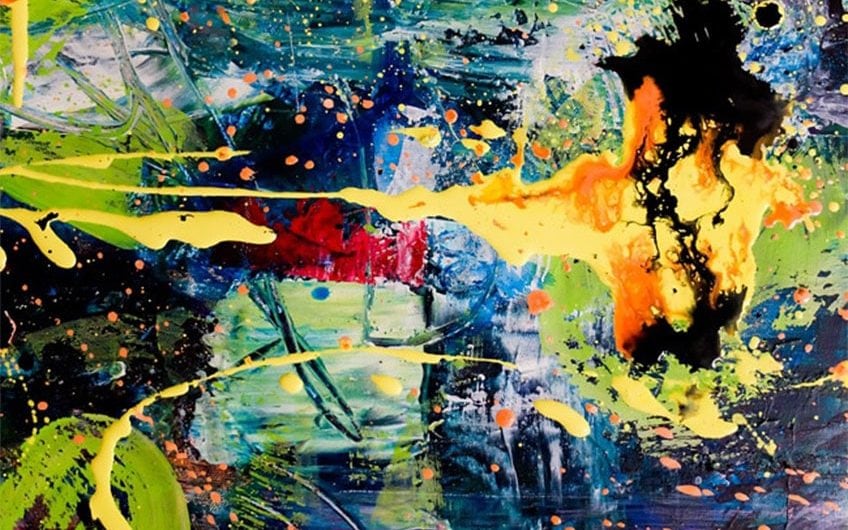
How to Make Acrylic Paint
Some artists wish to make their own paints so that they can create unique colors and have control over what goes into the paint. Making your acrylic paint can also save money in the long run. So, how to make acrylic paint is something to consider. However, if you are a beginner using acrylics, this might not be the best option until you have gained some experience. Acrylic paint can be made by combining a pigment, an acrylic binder, and a solvent.
- Depending on the type of pigment used, add your pigment to some water or clear alcohol and grind the pigment to disperse evenly
- Be careful not to add in too much water or alcohol as you do not want to dilute the bond too much when added
- Next, add your binder or medium, for example, Liquitex matte medium. Of course, you have choices, so you can also go for a glossy medium
- Follow the instructions on the acrylic binder medium
- You can also consider adding an acrylic retarder to slow the drying process
- Store your paint in airtight glass jars
- You can also make an imitation acrylic paint by combining equal amounts of liquid paint and white glue
Acrylic Painting Tips
Acrylic paints might be easier to use than watercolors, however, there are many things you need to still learn. While experimenting with your acrylic paints, think about implementing the following ideas or tips and avoiding others.
- When thinning acrylics, you can use water but consider using an acrylic thinning medium instead. This helps to provide a glossy more color-rich appearance than using water which can thin the paint too much and cause it to become more transparent.
- You cannot mix oil paints with acrylic paints
- Acrylic paints can be used to create a watercolor effect, however, once dry they cannot be reactivated
- Use synthetic brushes and try and get a range of sizes and styles
- Abstract expression brushes are perfect for wider strokes
- A palette knife is perfect for adding impasto painting effects
- Start by practicing and experimenting with mixing your colors. Gain a sound knowledge of color theory
- If you have to stop for a while but still have paint on your palette, spray a little water over the paint and cover it with cling wrap so you can use the paints again
- Discover how to increase or decrease gloss, and other features, by adding in mediums
- Use a spray mister on your paints while busy to prevent them from drying out. Spraying is also used for blending paints on the canvas
- Always clean your brushes immediately, as dry acrylic paint can ruin your brushes
- Have a couple of cups of water so you do not have to change the water too often
- Try not to leave your brush in the water too long as this could loosen the bristles
- Remember, acrylic paints dry darker, so create a color swatch to give you an idea of the correct paint color

Frequently Asked Questions
What Is Acrylic Paint Used For?
There are various types of acrylic paints and most of the artist or professional paints are used in painting. You also get cheaper acrylic paints that are perfect for certain crafts as they can be applied to a variety of surfaces including metal, wood, fabrics, glass, clay, canvas, and more.
Can Varnish Be Applied To An Acrylic Painting?
Yes, you can varnish an acrylic painting. You should wait at least one month, or sometimes longer for the paint to dry properly. Acrylic paint does dry fast, however, it takes some time to fully cure. You should use an acrylic-approved varnish, which can add a matte, gloss, or satin finish.
Are Acrylic Paints Permanent?
The paints dry fast and become water-resistant and permanent. The water-based paint is also lightfast and will not yellow over time. The paint surface becomes flexible and durable. This is why you should clean acrylic paints off your brushes and clothes before it dries with some water.
Is Acrylic Paint Safe To Use?
Since acrylic paints are water-based, you only need water to clean up and not toxic solvents as with oil paints. You can also work in more confined spaces without problems and worrying about breathing in toxic fumes. You can, however, get toxic pigments, and using the acrylic mediums with care is also a good idea. Acrylic paints are not meant to be applied to the skin and are not to be used as finger paints.
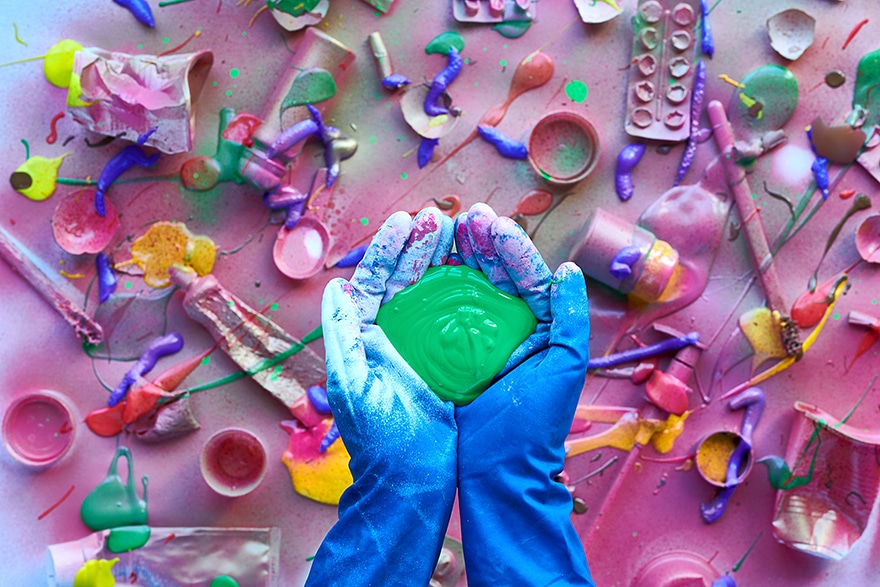
In 2005, Charlene completed her wellness degrees in therapeutic aromatherapy and reflexology at the International School of Reflexology and Meridian Therapy. She worked for a company offering corporate wellness programs for several years before opening her own therapy practice. In 2015, she was asked by a digital marketer friend to join her company as a content creator, and it was here that she discovered her enthusiasm for writing. Since entering the world of content creation, she has gained a lot of experience over the years writing about various topics such as beauty, health, wellness, travel, crafting, and much more. Due to various circumstances, she had to give up her therapy practice and now works as a freelance writer. Since she is a very creative person and as a balance to writing likes to be active in various areas of art and crafts, the activity at acrylgiessen.com is perfect for her to contribute their knowledge and experience in various creative topics.
Learn more about Charlene Lewis and about us.


